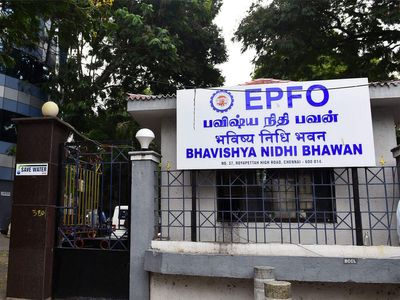![]()
The government may separate the provident fund and pension accounts of millions of formal sector workers covered by the Employees’ Provident Fund Organisation (EPFO) in order to protect monthly pension payouts.
The move is being seen as a pension reform under the labour code on social security. Authorities believe that once EPFO subscribers have a separate pension account, they won’t withdraw their pension accumulations along with employees’ provident fund (EPF).
When workers withdraw their provident fund, they end up breaking into their pension fund, too, because they are part of a single account at the moment, according to two government officials.
The problem has become acute post the pandemic, with mounting joblessness. A total of 7.63 million employees have dipped into these savings under a clause called covid advance as of 31 May 2021, following the outbreak of the pandemic last year. Since 1 April 2020, some 39 million claims, including covid advances, have been settled by EPFO as of 19 June 2021.
Of the cumulative 24% statutory EPFO contributions by both employees and employers every month, 8.33% goes to EPS (employee pension scheme) and the rest to EPF. While withdrawing from EPFO on account of any reason, subscribers often withdraw all their savings, including the pension amount. This, according to the government, defeats the purpose of retirement pension benefit provisions.
“Under EPFO, the PF and pension schemes must have two separate accounts. While there should be no problem in withdrawing the PF corpus when required as per law, the pension account should be ideally kept untouched. This will increase pension earnings and offer better social security coverage,” said one of the two officials who declined to be named.
The official said the matter was discussed at an EPFO board meeting earlier this year after an internal government panel advised the separation of EPF and EPS accounts.
The official said if due to any reason a subscriber dips into the pension corpus, “the pension account can show a commuted value”, meaning the post-retirement pension amount may come down. To discourage premature withdrawals, post the pension reforms, if a subscriber decides to break their pension fund, they may lose some incentives.
“Currently, EPFO subscribers are in a pool account system. What is needed is a separate account for EPF and pension. People are demanding more pension and, for that, separation is the best solution. Once they are separated, a subscriber can contribute more to pension and become eligible to get more pension post-retirement. As the covid-19 second wave is subsiding, you will see more action on this front,” said Virjesh Upadhyay, a central board member of EPFO.
According to the draft plan, the Employee Pension Scheme “should move towards a defined contribution system, wherein each individual scheme member is allotted an individual pension account, and the benefits admissible to the member are linked to the contribution received in the said individual pension account.”
Upadhyay, a former pension panel member of the EPFO, said there is a possibility of two separate schemes—one for those earning below the salary cap of ₹15,000 per month and another for all those subscribers who are earning more.
The government currently contributes 1.16% to the pension kitty of every PF member earning a monthly salary of less than ₹15,000 as part of the employees’ pension scheme of EPFO.
“This subsidy for poor and low paid subscribers should continue. But, overall, there should be a mechanism to stop employees from withdrawing pension money prematurely, and for that, there is a need for checks and balances,” said Upadhyay.
“Once issues are ironed out, and EPFO central board approves it, it will be announced. The reformed scheme for new employees is expected to be based on individual pension accounts and shall incentivize continuous and long-term membership of the pension schemes. For members who join early and continue membership till the age of superannuation, the pension shall be accordingly much higher than for those who join at a later age,” the second official with knowledge of the development said.
We are providing practical training (Labor Laws, Payroll, Salary Structure, PF-ESI Challan) and Labor Codes, Payroll Consultant Service & more:
- Labor Law + Payroll-Practical-Training: https://oneclik.in/labor-law-payroll-practical-training-certificate/ (PF, ESI, Bonus, Payroll & more)
- Labor Code, 2020 (Crash Course): https://oneclik.in/labor-code2020-rules-practical-training-certificate-crash-course/
- Labour Code | Labour Bill (Labour-Law-Practical-Training): https://oneclik.in/labour-law-practical-training/ (Factory, Contact Labor, Maternity Act & more)
- PF – ESI Consultant Service: https://oneclik.in/pf-esi-consultant-service/
- Labor Law, Compliance & HR – Payroll Management
- Advance Excel Practical Training: https://oneclik.in/advanced-excel-practical-training-certificate/
Get Latest HR, IR, Labor Law Updates, Case Studies & Regular Updates: (Join us on Social Media)
- Telegram Channel: “One Clik”
- Whatsapp Group: https://wa.me/919033016939
- Facebook: One Clik
- Linkedin: One Clik
- Instagram: oneclik_hr_management
- YouTube: One Clik

